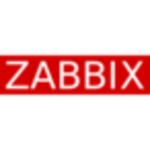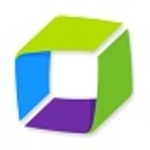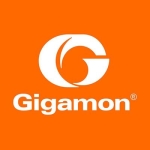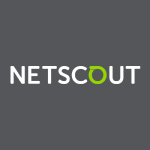What is our primary use case?
We are a hospital and we have a lot of external consultants and a lot of external programs. When we have a performance problem with a program, generally the response of the consultant is, "Oh, it's your network, your infrastructure, your server." With Skylight it's easy to prove that the problem is not our infrastructure and, in most cases, the problem is the application.
We use it to improve the performance of the database tables as well as for our Citrix solution.
How has it helped my organization?
I do a lot of troubleshooting with Skylight, troubleshooting network speed and application performance. It's really good because we have all the metrics, and it's very easy to find a direct route to the problem.
For example, one month ago we had to change a lot of servers in a laboratory. Before the change of the infrastructure, we took a snapshot of the network infrastructure and the performance. After the replacement of the servers, we took the same snapshot, the same picture of the network and the performance. We could see if the network was better and if the server performance was better than the old server. It was easy for us to see if the replacement of the hardware was good or not; or, after the virtualization of a server, if the performance is better or not. Without Skylight it would be difficult to compare because we would not have any measurements.
My work is easier with Skylight. It's easier to troubleshoot. It's easier to get a view of my network's health.
It has also helped to improve the interaction between our network, data center, and application teams. I can generate a report, for example, of database status or health. It makes it easier to discuss with the database administrators, to explain where a problem is. It's much easier to explain issues and to discuss them with the correct guy.
It's very important for us to have it. We save a lot of time when we have a problem. It's very easy to point to the problem and to get to the solution, whether it's a network problem, an application problem, or a server problem. It's very easy with Skylight.
In addition, it has improved productivity for sure. Regarding improvements in downtime, it's difficult to evaluate because we had a lot of other sensors to help us know if a server had a problem or if there was a database problem. If it was a big crash, for example, we had that information before we started using Skylight. If the issue is a degradation of an application or a service, Skylight is very useful because we see it on the main dashboard. We see all the applications. It's a critical application. If we have a green, and after that it's orange and then red, we know we have a problem. It's easy.
What is most valuable?
All the features are valuable. I am a network engineer, so I principally use the network sensor.
I always have the Skylight dashboard on one of my screens. The dashboard used to be very simple, a fixed dashboard, you couldn't change anything on it. But there has been a lot of improvement in the new version. Now you can create your own dashboard, specific to an application, specific to a server, or to something else.
The UI is very comfortable, it's very useful. It's very simple to use. It's very simple to explain to someone who doesn't know what a network is.
For how long have I used the solution?
More than five years.
What do I think about the stability of the solution?
It's a very stable application. I have never had to reboot the server, other than after an upgrade. And to upgrade it takes about ten minutes.
What do I think about the scalability of the solution?
The product is very scalable.
We have two internal data centers and two external data centers; one for production and one for the development. We have about 200 access switches. We have Citrix farms and about 200 servers with Windows and Linux. We have a mainframe. It's a large environment.
We have had no issues with scaling.
How are customer service and technical support?
Technical support from the Skylight is very good. When we have a problem with deploying or configuring something, it's very easy to contact technical support and they are very good. In general, within one hour, we have the response to our problem. It's the quickest support I see, and I use technical support from Cisco, from Palo Alto. Skylight support is very fast.
We had to escalate an issue one time. They redirected me to R&D and I had a response in one or two hours, with the correction I needed.
Which solution did I use previously and why did I switch?
We didn't use anything before Skylight.
How was the initial setup?
The initial setup of Skylight is very easy. It takes about ten minutes. In ten minutes the server is running and it's collecting information. That ten minutes is when you have a physical version. For a VMware version it takes about one hour to deploy it, but it's very easy.
The initial deployment is easy, but for the rest, day-to-day, there is work: To configure the zones, the critical networks, critical applications, it's day-to-day. The initial setup is easy, but afterward, I worked on it for about an hour every day. The configuration is ongoing.
What about the implementation team?
What was our ROI?
It has clearly saved us money. For example, when we have a problem with an external application and we meet with the distributor of the application, they will say, "Okay, the problem is the performance of the server." The distributor will suggest we get a new server with more capacity, more disk, more memory, more everything. We can prove, with Skylight, that the problem is not on the server. We can prove that the problem is not on the network. We can prove that the problem is due to the database's structure. When we put the diagram in front of the distributor he says, "Ahh. Okay." And the database administrator can say, "Okay. Just add an index here, an index here," and after that, the product is good to go. So we have saved a lot of money there.
Before we had Skylight's analysis, the people who use the application would spend a lot of time in the application and would lose a lot of time waiting for it. After we proved that the problem is the application, and after fixing the problem, its speed improved a lot.
It's difficult to quantify the money we have saved with it, because it's money for a server, it's money for the time of the people involved with the application, it's money for the time of our networker equipment, etc.
What's my experience with pricing, setup cost, and licensing?
Pricing is a little bit expensive.
Which other solutions did I evaluate?
I tried SolarWinds before, but it's more expensive.
What other advice do I have?
I used the first version, it was called Secure Active. After that, its name was Performance Vision. And now it's Skylight.
With each new version of Skylight, there are a lot of new features.
I am the principal user of Skylight. When anybody in the service - about 20 people - has a problem, they come to me and I generate the reports. But I'm the only one who uses SkyLIGHT.
We don't have any plans to expand usage as of now.
Disclosure: PeerSpot contacted the reviewer to collect the review and to validate authenticity. The reviewer was referred by the vendor, but the review is not subject to editing or approval by the vendor.















